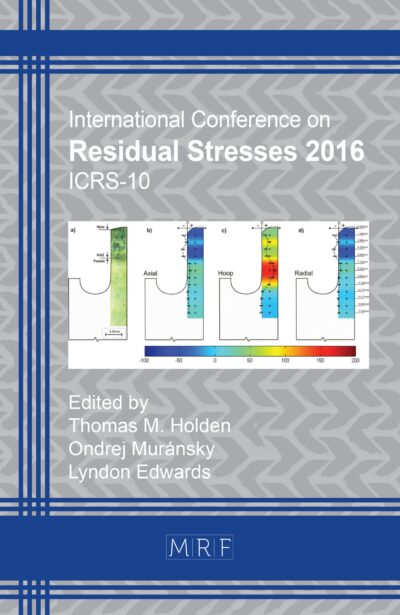Evaluation of Residual Stresses in PVD Coatings by means of Tubular Substrate Length Variation
H. Lille, A. Ryabchikov, J. Kõo, E. Adoberg, V. Mikli, J. Kübarsepp, P. Peetsalu
download PDFAbstract. The aim of the study was to determine macroscopic residual stresses in PVD coatings. The device for measurement of the length of the substrate was improved, where a change in tube length was reduced to the deflection of the middle cross-section of the elastic element whose deformation was measured by four strain gauges. The formulas for calculation of residual stresses are presented. For comparison a unilateral coating was deposited on a vertically fixed plate using the conventional curvature method. As an application, residual stresses in hard PVD TiAlN coatings were investigated. The microstructure and thickness of the studied coatings were investigated by means of scanning electron microscopy (SEM) in Zeiss EVO MA-15. The mean values of compressive residual stresses determined by both methods, for the studied coatings, were very high (3.1-6.5 GPa), irrespective of coating thickness, and practically equal with the measurement uncertainty of the method. The developed tube length variation method is reliable and applicable for determination of residual stresses in PVD coatings.
Keywords
TiAlN Hard PVD Coating, Residual Stresses, Length Variation
Published online 9/11/2018, 6 pages
Copyright © 2018 by the author(s)
Published under license by Materials Research Forum LLC., Millersville PA, USA
Citation: H. Lille, A. Ryabchikov, J. Kõo, E. Adoberg, V. Mikli, J. Kübarsepp, P. Peetsalu, ‘Evaluation of Residual Stresses in PVD Coatings by means of Tubular Substrate Length Variation’, Materials Research Proceedings, Vol. 6, pp 131-136, 2018
DOI: https://dx.doi.org/10.21741/9781945291890-21
The article was published as article 21 of the book Residual Stresses 2018
![]() Content from this work may be used under the terms of the Creative Commons Attribution 3.0 licence. Any further distribution of this work must maintain attribution to the author(s) and the title of the work, journal citation and DOI.
Content from this work may be used under the terms of the Creative Commons Attribution 3.0 licence. Any further distribution of this work must maintain attribution to the author(s) and the title of the work, journal citation and DOI.
References
[1] D.T. Quinto, Twenty-five years of PVD coatings at the cutting edge. Fall Bulletin. (2007) 17-22.
[2] T. Sampath Kumar, S. Balasivanandha Prabu, Geetha Manivasagam, and K. A. Padmanabhan, Comparison of TiAlN, AlCrN and AlCrN/TiAlN coatings for cutting-tool applications. Int. J. Min. Met. Mater. 21 (2014) 796-805.
[3] H. Lille, J. Kõo (et al). Comparation of Curvature and X-ray methods on Residual Stresses Measurements in Hard PVD Coatings. Materials Science Forum, 681 (2011) 455-460. Information on https://doi.org/10.4028/www.scientific.net/MSF.681.455
[4] Information on https://www.pvd-coatings.co.uk/applications/cutting-tools/
[5] H. Lille, A. Ryabchikov, J. Kõo (et al). Evaluation of Residual Stresses in PVD Coatings by means of Strip Substrate Length Variation and Curvature Method of Plate Substrate. Solid State Phenomena 267 (2017) 212-218. Information on https://doi.org/10.4028/www.scientific.net/SSP.267.212
[6] J. Kõo, J. Valgur, Residual stress measurement in coated plates using layer growing/removing methods: 100th anniversary of the publication of Stoney’s paper “The tension of metallic films deposited by electrolysis”. Mater. Sci. Forum. 681 (2011) 165-170.
[7] J. Kõo, A. Ryabchikov. On the determination of residual stresses in coatings from measured longitudinal deformation of a wire substrate, in: Proc. 19th Symp. on Exp. Mech. of Solids J. Stupinicki (Ed.), Warsaw Univ. of Technology, Jachranka (Poland), 2000, pp. 319-324. Information on https://hdl.handle.net/10492/3803













